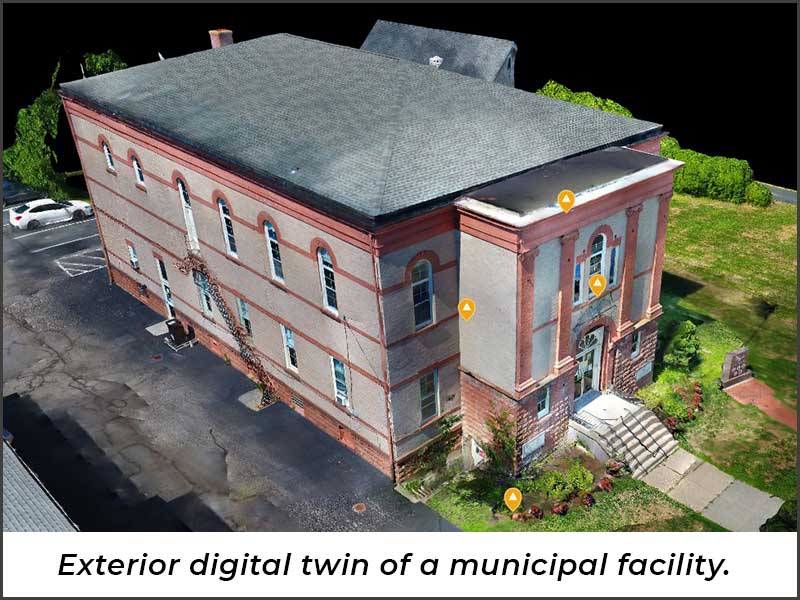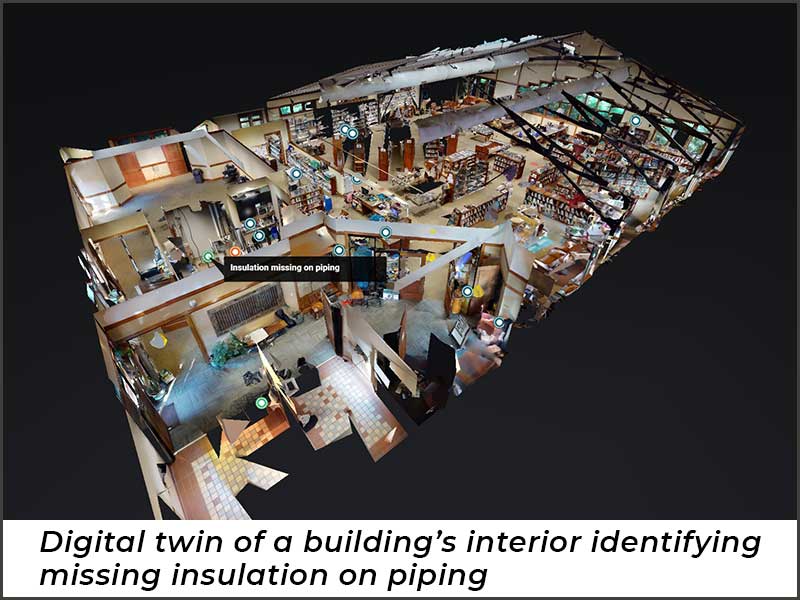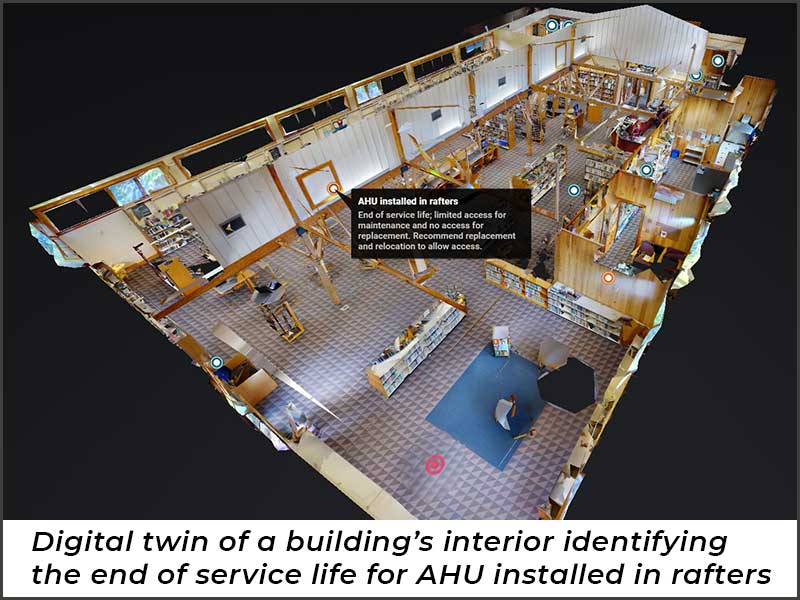City and town officials, as well as staff, responsible for the utilization, maintenance and care of public buildings have their hands full every day ensuring the buildings are optimized for the maximum benefit of their community. This responsibility extends far beyond the maintenance and care of the building envelope and requires a detailed understanding of mechanical, electrical and plumbing systems, the use of space by various city and town departments, as well as the many other assets and functions housed within these spaces.
Faced with this, managers of these facilities and spaces can often feel overrun with records ranging from day-to-day operation and maintenance schedules to stock and asset inventory, repair and service logs, drawings, models, budget spreadsheets, and so much more. Compounding the issue further, many of these records exist only in analog or paper form.
In recent years, the Architecture, Engineering and Construction (AEC) industry has begun adapting modern technologies to capture and organize spatial data to better analyze and understand the built environment in their day-to-day work. These same technologies can be used by cities and towns to better steward their spatial assets more efficiently.
DIGITAL #TWINNING
Spatial Data, embedded within the context of a dimensionally accurate digital replica of a physical asset—or digital twin—provides building and facility managers with unprecedented access to the information they need to make better, faster and more informed decisions about the buildings and other spatial assets they are entrusted with. Through data visualization, a digital twin connects and integrates all building information—both static and dynamic.

Previously, capturing this level of detailed information was extremely time consuming and required specialized modeling software and knowledge, rendering it cost prohibitive in both the short and long term. Today, generating a digital twin of your existing space is made possible through an AI-driven technology process known as photogrammetry.
Drone-mounted and terrestrial-based cameras capture thousands of images that are stitched together to create a 3D, dimensionally accurate model that provides the basis of the digital twin. Information and other digital assets (i.e. CAD and PDF drawings, BIM models, OEM manuals, etc.) can be layered into the digital twin and indexed to specific locations throughout the model. This process is completed in a fraction of the time and allows for regular updates and additional information to be added into the dataset by anyone with a working understanding of the space.

More mature implementations of the digital twin concept include seamless integrations to building maintenance and security systems by providing live feeds and data overlays from any number of cameras and sensors in these host systems. These robust spatial databases are hosted through secure cloud-based platforms and made accessible through any modern web browser. Rather than a complex tree of folders, with files upon files, and endless naming conventions buried on a physical server, a digital twin results in a fully integrated, up to date, digitized, interactive model of space that can be accessed from anywhere and universally understood.
BENEFITS OF DIGITAL TWINS
The dimensional and visual accuracy provided by a digital twin gives facility managers access to real-world insights regarding the entire life cycle of the spaces within their care. This results in more proactive and less reactive decision-making and planning processes. Some of the benefits towns and cities should look to realize after implementing a digital twin include:
– Replacing physical site visits with insightful, information-laden virtual visits through every square foot of space, reducing the time needed to make critical decisions without compromising the ongoing functionality of the space. Facility managers can track assets and troubleshoot issues remotely. These capabilities improve technician efficiencies while also contributing to the overall operational effectiveness of on-site equipment.

– Digital twins make it possible for facility managers to move operations from reactive to models that are more preventive. This migration can drive better decision making by being able to access, process and present both historical and present data in real time, which enables future building states to be more easily predicted.
– Digital twins provide many opportunities to reduce costs. Facility managers can monitor on-site processes, predict maintenance issues before they occur, and flag areas for repair automatically. Digital twins can also learn equipment patterns to establish when equipment is in jeopardy of breaking down. Overtime, the lifespan of equipment can be expanded and the breakdown costs are reduced with these features.
– Facility managers can drill down into their building utilization from a large-scale view—all town or city spaces—to a single building, then to a department, then to a specific room or person. One unified database and user experience allows managers to move seamlessly through the various hierarchies of their space.
– All drawings, contracts, services and maintenance records are stored and linked in one place. Officials will be able to easily access data to answer questions such as: Why was a contract awarded? Was it responsible? And, how dollars are being managed?
PLANNING FOR THE FUTURE
The investment in a digital twin represents a move toward a better, more complete understanding of your space that facilitates data-driven insights and robust decision making for the future. Modern technology platforms bring these capabilities closer than ever before, enabling the knowledge of experienced facility managers to be seamlessly integrated with insights from other sources such as architecture and engineering professionals. Finding a partner with expertise in capturing, analyzing and planning for your space is a great way to ensure a successful foundation for your own digital twin.

